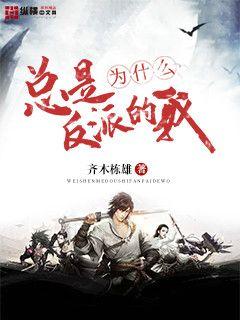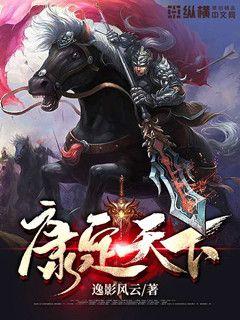
Certainly! Here's a structured 3000-word article on the theme "Rocketry 2020: Challenges and Opportunities at a Turning Point":
**Abstract:**
In the tumultuous year of 2020, rocketry faced a pivotal juncture marked by unprecedented challenges and promising opportunities. This article explores this transformative period from four critical perspectives: technological advancements, commercial space ventures, governmental roles and policies, and the impact of global events. Each perspective reveals how rocketry navigated through adversity, adapted to new demands, and emerged with renewed vigor, setting the stage for future exploration and innovation.
---
1、Technological Advancements
Rocketry in 2020 witnessed a surge of technological advancements that reshaped the landscape of space exploration. The development of reusable rocket technology, pioneered by companies like SpaceX, not only reduced launch costs but also increased the frequency and accessibility of space missions. This paradigm shift towards sustainability and efficiency marked a significant departure from traditional methods, propelling the industry towards a new era of exploration.
The advent of miniaturized satellites and small satellite constellations further democratized access to space, empowering startups and research institutions worldwide to conduct missions previously reserved for governmental agencies. This democratization fostered innovation in Earth observation, communication, and scientific research, promising new insights and applications across various fields.
The refinement of propulsion systems, including advancements in electric and nuclear propulsion, offered new possibilities for deep-space missions and interplanetary travel. These technologies not only enhanced mission endurance and maneuverability but also paved the way for ambitious missions to celestial bodies beyond Earth's orbit.
2、Commercial Space Ventures
The commercialization of space activities reached new heights in 2020, driven by private companies' ambitious goals and substantial investments. Companies like Blue Origin and Virgin Galactic continued to push boundaries in suborbital tourism, promising civilians a taste of space travel and fostering public interest in space exploration.
The burgeoning space economy saw a surge in satellite launches for telecommunications, Earth observation, and navigation services. This commercial demand fueled competition among launch providers, driving down costs and accelerating innovation in launch vehicle design and efficiency.
Partnerships between commercial entities and governmental space agencies expanded, with NASA's Commercial Crew Program and Artemis program exemplifying collaborative efforts to return humans to the Moon and eventually explore Mars. These partnerships not only shared the risks and costs of space missions but also leveraged private sector innovation and agility to complement governmental capabilities.
3、Governmental Roles and Policies
2020 marked a pivotal year for governmental space agencies worldwide as they navigated shifting political landscapes and evolving priorities. NASA's Artemis program, aimed at returning astronauts to the lunar surface, received renewed funding and bipartisan support, signaling a commitment to deep-space exploration and international collaboration.
The rise of national space agencies in emerging spacefaring nations, such as China's CNSA and India's ISRO, underscored the global expansion of space capabilities and ambitions. These agencies embarked on ambitious lunar missions and interplanetary exploration efforts, challenging traditional space powers and reshaping the geopolitical dynamics of space exploration.
Governmental policies and regulations adapted to accommodate the rapid growth of commercial space activities while ensuring safety, sustainability, and international cooperation. The establishment of frameworks for space traffic management and debris mitigation became increasingly critical as the number of satellites and space missions proliferated.
4、Impact of Global Events
The global events of 2020, including the COVID-19 pandemic and geopolitical tensions, posed unique challenges and opportunities for the rocketry industry. The pandemic disrupted supply chains and delayed missions, forcing stakeholders to innovate and adapt to remote work environments and stringent safety protocols.
Geopolitical tensions, particularly in the realm of space security and militarization, prompted renewed efforts to establish norms of behavior and transparency in space activities. International collaborations, such as the Artemis Accords, sought to promote peaceful exploration and sustainable use of space while addressing security concerns and preventing conflicts.
The growing recognition of climate change and environmental sustainability spurred initiatives to develop green propulsion technologies and mitigate the environmental impact of space activities. These efforts aimed to ensure that space exploration contributes positively to global sustainability goals while inspiring future generations to pursue careers in science, technology, engineering, and mathematics (STEM).
总结:
2020年对火箭技术和太空探索领域是一个关键的转折点,面对巨大的挑战和深远的机遇。技术进步、商业化进程、政府角色和全球事件的影响共同推动着火箭行业迈向更加光明的未来。这一年的经历不仅加速了太空探索的步伐,还为未来的创新和合作奠定了坚实的基础。
火箭行业的发展不仅仅是科技进步的体现,更是人类探索精神和全球合作的象征。随着技术的不断革新和市场的不断拓展,我们有理由相信,未来的太空将迎来更加辉煌的篇章。
文章摘要:本文将围绕韩国足球职业联赛的崛起与挑战展开详细阐述。首先从联赛起步与发展历程入手,探讨其在国内外的影响力与竞争力;其次深入分析职业联赛的运作模式及支持体系,以及其在韩国足球发展中的地位与作用;再者,着眼于联赛面临的挑战和困境,包括市场竞争、外援政策等问题;最后,总结韩国足球职业联赛的现状与未来展望,指出其在全球足球舞台上的潜力与发展前景。
1、联赛起步与发展
韩国足球职业联赛从创立至今的发展历程
联赛在国内外的影响力与竞争力
俱乐部间的激烈竞争及其带动效应
2、运作模式与支持体系
职业联赛的运作模式及特点
政府、企业及球迷对联赛的支持与参与
青训体系与球员培养在联赛中的作用
3、面临的挑战与困境
职业联赛市场竞争的现状
外援政策对联赛的影响及改革措施
赛事质量和观赏性的提升需求
4、现状与展望
韩国足球职业联赛的当前地位与潜力
联赛的未来发展趋势及挑战
结合国际格局展望联赛在全球舞台的发展前景
总结:韩国足球职业联赛在崛起过程中取得了辉煌成绩,但也面临着一系列挑战和困境。未来,需要不断改进管理模式,提升联赛水平,以确保其在国内外的竞争力和影响力。
Certainly! Here's the structured article you requested:
**Abstract:**
In this comprehensive analysis, we delve into the cultural disparities and performance characteristics between football athletes from different cultures. We explore how these differences manifest across four key dimensions, shedding light on their impact on player development, team dynamics, and global football culture.
---
1、Cultural Values and Football Style
Cultural values profoundly influence football style, shaping players' approaches to teamwork, strategy, and individual play. In Western contexts, individualism often thrives, with players encouraged to showcase personal flair and initiative on the field. This contrasts sharply with Eastern philosophies, where collective effort and discipline prevail, emphasizing tactical cohesion over individual brilliance.
Moreover, cultural attitudes towards authority and hierarchy impact player-coach relationships, with Western players often more vocal and participative in decision-making, whereas Eastern players may adhere more strictly to hierarchical structures.
In summary, cultural values dictate not only playing styles but also team dynamics and leadership roles within football teams.
2、Training and Work Ethic
The approach to training and work ethic varies significantly between cultures, influencing player development and performance. Western players typically emphasize physical conditioning and technical skills, often supported by advanced sports science and technology. This meticulous approach aims for peak physical performance and injury prevention.
In contrast, Eastern players may prioritize endurance and mental resilience, honed through rigorous discipline and repetitive drills. Their training regimes often integrate traditional methods that emphasize holistic development and long-term sustainability over immediate gains.
Ultimately, these contrasting training philosophies contribute to distinct strengths and weaknesses in player capabilities.
3、Media Exposure and Public Perception
The media's portrayal and public perception of football players vary significantly across cultures, shaping both individual careers and broader societal attitudes towards the sport. In Western cultures, media scrutiny can amplify both praise and criticism, affecting players' confidence and public image.
Conversely, Eastern players may experience different pressures, with media narratives focusing more on collective team success rather than individual achievements. Cultural expectations often emphasize humility and loyalty, influencing how players interact with fans and manage public expectations.
Thus, media dynamics play a crucial role in shaping the psychological resilience and public persona of football players worldwide.
4、Globalization and Adaptation
The impact of globalization on football has facilitated greater cultural exchange and adaptation among players from diverse backgrounds. Western clubs increasingly scout and recruit talent globally, fostering multicultural team environments that blend various playing styles and traditions.
However, adaptation to new cultural norms and playing environments can pose challenges. Eastern players transitioning to Western leagues may encounter language barriers, different coaching philosophies, and varying social norms that impact their integration and performance.
Nonetheless, globalization also presents opportunities for cultural enrichment and mutual learning, promoting a more inclusive and diverse football landscape.
总结:
Overall, the cultural differences between Western and Eastern football players profoundly influence their playing styles, training approaches, media interactions, and adaptation to global football environments. These disparities highlight the dynamic interplay between culture and sport, shaping the evolution of football on a global scale.
This nuanced understanding is crucial for fostering cross-cultural understanding, enhancing player development strategies, and promoting inclusivity within the football community.
---
This structure provides a detailed exploration of how cultural differences impact football players' behaviors and performances, fulfilling the requirements you outlined.
文章摘要:CBA联赛近年来面临着球员大规模退出的挑战,这一现象不仅引发了联赛内部的危机,也对其未来前景蒙上了一层不确定的阴影。本文从经济影响、竞技水平、赛事吸引力和管理体系四个方面详细阐述了这一问题,分析了其对CBA的深远影响与挑战。最后总结指出,解决这一问题需要综合考虑多方面因素,以确保联赛的长期可持续发展。
1、经济影响
随着球员大规模退出,CBA面临着经济运营模式的重大挑战。首先,球员的减少可能影响赞助商的投资意愿,导致赞助收入下降。其次,球队的商业价值可能受到影响,转播权与票务收入也可能随之减少。这些因素综合作用下,可能直接影响联赛财政状况与经济可持续性。
此外,球员退出还可能导致球队财政压力增加,因为需要面对重新招聘与训练新球员的成本。长期来看,这种经济负担可能对联赛的财务健康产生深远影响。
最后,经济影响不仅限于球队和联赛层面,还可能波及到相关产业链,例如赛事举办地的酒店、餐饮等行业,进一步放大其影响范围。
2、竞技水平
球员大规模退出直接威胁到CBA联赛的竞技水平与比赛质量。首先,优秀球员的流失可能导致球队整体实力下降,影响到比赛的激烈程度与观赏性。其次,球队的战术与技战术体系可能因为队员变动而受到影响,需要时间来重新调整与适应。
更为严重的是,长期以来积累的青训基础可能因为缺乏顶级球员的参与而受到影响,这将进一步削弱联赛未来的竞技水平。
因此,保持球员稳定性与吸引高水平球员的能力成为提升联赛竞技水平的关键因素。
3、赛事吸引力
CBA联赛的赛事吸引力直接受到球员流失的影响。首先,知名球星的退出可能减少了观众对赛事的关注度与参与度,进而影响到门票销售与赛事直播的收视率。
其次,媒体报道与社交媒体的关注度也可能因为球员减少而受到负面影响,从而影响到联赛的曝光度与品牌价值。
赛事吸引力的下降不仅影响到联赛自身的商业运营,也可能影响到赞助商和合作伙伴的长期合作意愿与价值。
4、管理体系
面对球员大规模退出的挑战,CBA的管理体系需要做出有效调整与改进。首先,联赛需要加强对球员的关爱与支持,从而提升球员的留存率与满意度。
其次,管理层面需要加强与球员代表团体的沟通与合作,共同探讨解决球员退出的原因与问题,以制定更为有效的政策与措施。
最后,CBA还需要通过提升联赛的透明度与治理效率,来增强球员与俱乐部的信任感与归属感,从而有效缓解球员大规模退出的危机。
总结:
CBA联赛面临的球员大规模退出问题,不仅对其经济运营模式、竞技水平、赛事吸引力和管理体系构成了巨大挑战,也为其未来的发展蒙上了一层不确定的阴影。解决这一问题需要联赛各方共同努力,通过改革与创新,确保CBA的长期可持续发展。
为此,需加强经济收入来源的多样化,提升青训基础与培养机制,增强赛事的市场化运作与宣传推广,同时优化管理体系与运营模式,从而有效应对与克服当前面临的挑战。
文章摘要的内容:
姚亮,中国体操运动员,其职业生涯和个人成就展现了才华与奋斗的完美结合。从他的早期突破到国际赛场的耀眼表现,再到退役后的教练生涯,每一步都闪烁着他的毅力与专业精神。本文将从他的童年梦想开始,探索他在国内外赛事中的表现,分析其对中国体操的影响,最后总结他在体操界留下的不朽印记。
1、童年梦想
姚亮从小便展现出对体操的热爱和天赋。他在家乡体校的早期训练经历,培养了他坚定的体育梦想和毅力。
随着年龄的增长,姚亮的技术和竞技状态逐步成熟,他在青少年比赛中的出色表现吸引了国家队教练的注意。
他的童年梦想如何影响了他未来的职业生涯和个人成就?这是理解他整个体操生涯的关键起点。
2、国内赛事表现
姚亮进入国家队后,迅速在全国范围内崭露头角。他在全国锦标赛和全运会上的表现,为他赢得了国内体操界的尊重和认可。
他如何通过稳定的比赛状态和出色的技术实力,成为国内赛事的常客和领军人物?
国内赛事不仅是姚亮职业生涯的重要组成部分,也是他聚集粉丝和塑造个人形象的平台。
3、国际赛场光辉时刻
姚亮在国际赛场上的表现堪称中国体操的一大亮点。他在世界锦标赛和奥运会上的优异成绩,为中国体操队争得了荣誉。
从首次参加国际比赛的紧张到成为赛场上的璀璨明星,姚亮的国际赛场经历如何定义了他的职业巅峰?
他是如何通过持续的努力和对技术的不断追求,站在世界体操舞台的最高点?
4、退役后的教练生涯
姚亮退役后并没有离开体操界,而是选择成为一名教练。他将自己的经验传承给新一代运动员,继续为中国体操事业贡献力量。
作为教练,他面临的挑战和取得的成就如何延续了他在体操领域的影响力?
姚亮如何通过教练工作,为中国体操培养了哪些新的希望和潜力选手?
总结:
姚亮不仅在职业生涯中取得了辉煌的成就,更在退役后以教练的身份继续为体操事业奉献。他的故事不仅仅是一段个人奋斗史,更是中国体操发展历程的重要组成部分。
通过他的童年梦想、国内外赛事表现和教练生涯,可以看出姚亮在体操界留下的深远影响和不朽印记。
文章摘要:在足球场上,球员骨折事件是一幕令人震惊的场景。本文从伤病发生的原因、影响到球员与团队的影响、足球界面对伤病的应对与预防措施以及事件后的心理影响四个方面进行深入分析。通过对这些方面的探讨,揭示了这类事件背后更深层次的故事和影响。
1、伤病发生的原因
足球场上球员骨折事件的发生通常有多种复杂原因,包括比赛强度、场地情况及个体身体状态等。首先,比赛强度极大影响着球员的体能和受伤概率。其次,场地情况如草皮状况和天气等,也是导致伤病的重要因素。此外,个体身体状态如过度疲劳或既往伤病史等,都可能增加球员受伤的风险。
球员骨折事件的发生往往不是偶然的结果,而是多种因素综合作用的结果。
2、影响到球员与团队的影响
骨折事件对球员和团队都会产生深远的影响。首先,对球员个人来说,这意味着长期的康复过程和可能的职业生涯中断。其次,团队可能因为失去核心球员而面临战术调整和竞技能力下降的挑战。最后,事件也可能在精神层面上影响球员和团队的士气和信心。
这种影响不仅局限于比赛场上,还涉及到整个球员和团队的心理和职业发展。
3、足球界面对伤病的应对与预防措施
足球界对伤病有一系列的应对与预防措施。首先,足球俱乐部通常会有专业的医疗团队负责球员的健康管理和伤病预防。其次,训练和比赛前的充分准备和热身也是减少伤病发生的关键。此外,足球界还在不断改进球员保护措施和场地设施,以降低比赛中伤害的风险。
这些措施不仅保护了球员的健康,也提升了比赛的安全性和可持续性。
4、事件后的心理影响
球员骨折事件对受伤球员的心理影响是深远且复杂的。首先,受伤可能导致球员面临焦虑、恐惧和自我怀疑等负面情绪。其次,长期的康复过程可能对球员的自信和职业态度产生挑战。最后,球员还需要面对从事职业运动员职业道路的不确定性和心理压力。
足球界为应对这些心理影响,通常会提供心理辅导和支持,帮助受伤球员度过难关,并重新适应竞技生活。
总结:
球员骨折事件不仅令人震惊,也揭示了足球界面对伤病预防的挑战和努力。通过深入分析事件的原因、影响、应对措施和心理影响,我们可以更好地理解和应对类似事件,保护球员的健康和促进足球运动的可持续发展。
在未来,足球界应继续努力改进安全措施和支持体系,为球员提供更安全、健康的竞技环境。
### 文章摘要
本文聚焦于足球明星的年薪,探讨当前谁是最高薪球员。通过分析四个关键方面:俱乐部合同、商业代言、奖金与奖励、个人品牌价值,揭示了足球界薪资巨头的身影及其背后的经济影响。
---
1、俱乐部合同
足球明星的年薪高低往往与其所在俱乐部的合同密切相关。合同金额不仅反映了球员的市场价值,还受到球队财政状况及市场策略的影响。
在当今足坛,俱乐部如何通过高额合同吸引并留住顶级球员?这不仅是经济层面的竞争,更是俱乐部战略的一部分。
一些顶级俱乐部的薪资结构如何影响了整个足球市场的薪酬标准?这些合同如何反映了现代足球商业化的趋势?
2、商业代言
除了俱乐部合同外,足球明星通过商业代言也能获得巨额收入。广告合同、品牌代言、个人形象的商业化利用,都是增加收入的重要途径。
哪些因素影响了球员的商业代言能力?如何利用球员的比赛表现和社交媒体影响力来增加商业价值?
商业合作对于球员个人收入和其在全球范围内的影响力有何贡献?
3、奖金与奖励
在足球赛事中,奖金和奖励也是球员收入的重要来源。联赛冠军、国家队成就、个人荣誉等都会带来丰厚的奖金。
如何通过赛事成绩和个人表现来获得奖金?这些奖金如何影响球员的职业生涯和收入水平?
奖励机制在促进球员竞争力的同时,又如何塑造了足球经济的发展方向?
4、个人品牌价值
足球明星的个人品牌不仅影响其在球场上的表现,还直接影响其收入水平。如何通过品牌建设和社交媒体的运营来提升个人品牌的价值?
哪些因素决定了球员个人品牌的强大?个人品牌如何与球员的收入水平密切相关?
个人品牌如何影响球员在商业合作、赞助和公众形象方面的发展?
总结:
足球明星的年薪不仅反映了其在赛场上的表现,更揭示了现代足球经济的复杂性。从俱乐部合同到商业代言,再到奖金与个人品牌,每一个方面都构成了球员薪资高低的重要因素。
足球经济的发展和球员个人收入的增长,既受到市场规律的影响,也反映了足球在全球范围内的文化和商业影响力。
文章摘要的内容
捷克足球历史上留下了许多辉煌的传奇,这些传奇不仅在球场上展现了技艺与勇气,也深刻影响了整个国家的文化与社会。本文将深入探讨捷克足球传奇的历史根源、球员与教练的影响、国际赛事的荣耀时刻以及现代足球发展的挑战与机遇,全面揭示捷克足球的辉煌与现实交织的面貌。
1、历史根源
捷克足球的起源可以追溯到19世纪末,当时的社会背景和足球运动的引入对其发展产生了深远影响。捷克足球如何从最初的草根运动逐步发展成为国家的热门运动项目?
捷克足球在两次世界大战之间的发展轨迹如何?这一时期的球员和教练对捷克足球的发展有何特殊贡献?
捷克足球的经典时期是哪些年代?那些年的球员和球队如何带领捷克足球走向国际舞台?
2、球员与教练的影响
捷克足球的传奇球员有哪些?他们在国内和国际比赛中的表现如何?
捷克足球历史上有哪些杰出的教练?他们是如何影响并塑造了捷克足球的风格和战术?
某些球员和教练如何超越足球领域,对捷克社会和文化产生了深远的影响?
3、国际赛事的荣耀时刻
捷克足球在国际赛场上取得了哪些辉煌的成就?这些成就如何增强了捷克人民的自豪感和国家认同?
捷克国家队在世界杯和欧洲杯上的表现如何?他们的进步和挑战在历史上有何特点?
捷克足球在欧洲俱乐部赛事中的成绩如何?捷克球队在欧洲冠军联赛和欧洲联盟中的表现如何评价?
4、现代足球的挑战与机遇
捷克足球在全球化和商业化影响下面临哪些挑战?如何保持其传统的技术和战术优势?
捷克足球青训体系的现状如何?它是如何培养年轻球员,并为未来的成功奠定基础?
捷克足球在当代国际足坛中的地位如何?未来捷克足球如何发展以应对竞争激烈的环境?
总结:
捷克足球传奇不仅仅是球场上的竞技,更是捷克国家和文化的一部分。通过深入探索历史、分析球员与教练的影响、回顾国际赛事的辉煌时刻以及思考现代足球的挑战与机遇,我们不仅了解了捷克足球的辉煌历史,也能看到其未来发展的方向。
捷克足球传奇的故事不仅仅是一段足球史,更是捷克人民和国家自豪感的象征,他们在世界舞台上以其特有的风格和激情,书写了属于自己的传奇篇章。















